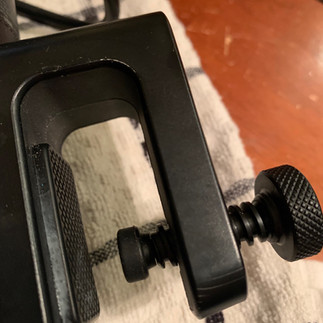Sous Vide: Making Life Easier
- Becky
- Jan 5, 2023
- 4 min read

If only there was a way to cook your food that would guaranteed you would never overcook it ever again. Imagine not having to worry about timing, even if you forgot about it and it still cooked perfectly. How cool would that be? Well, that’s not the future – that is now. Introducing, sous vide cooking.
Sous vide, (pronounced soo-VEED), is French for "under vacuum." In a nutshell, it is a low-temperature cooking method where vacuum-sealed food is slowly cooked in a water bath. The technique involves first sealing food in an airtight, food-grade plastic pouch, typically using a vacuum-packing machine. Removing the air inside the pouch not only helps lock in flavor, but it also protects the food from getting soaked with water during cooking. The food pouch is then immersed in a hot water bath set to a specific constant temperature using a device called an immersion circulator.
The immersion circulator is a cylinder-shaped tool that controls the water temperature. This tool acts as a heater, thermometer, and pump that moves the water around to keep the temperature consistent. During the cook, the circulator maintains a constant, specific temperature and in turn, heats the food to a precise temperature. The water temperature is typically set well below simmering, anywhere from 125 degrees to 195 degrees.
Basically, the temperature you choose for your sous vide circulator will be the same temperature of your food when it's cooked. In other words, if you want your steak cooked to 135 degrees, just set the temperature of the water to 135 degrees - that's how hot it will get, and not one degree hotter. Sous vide will cook both the inside and outside of the food at the exact same rate. A sous vide steak is then medium rare all the way through, instead of being pink in the center and grey around the edges.

One thing the sous vide method will not do is produce a brown crust on your meat, nor will it turn chicken skin crispy. The solution is to sear it afterward. You don't want to skip this step, because while your steak might be perfectly cooked on the inside, the outside will be visually unappealing. Get your skillet super hot, and then quickly sear all sides of your meat for just a minute or two, removing when browned or crispy. You shouldn't have to worry about the extra cooking time raising the temperature of the meat since it’ll be cooking so briefly, but if this worries you, simply set your immersion circulator 5 degrees below done and let the few minutes of searing raise the final temperature to the perfect temp.
No vacuum sealer? No problem! Just put your food in a zip top bag and seal it almost completely, leaving an inch or so unsealed. Slowly drop the bag into the pot of water and let the water push out all the air. When you get to the top of the bag, seal it up.
No immersion circulator? Well, that’s a deal breaker; without that, you’re not cooking sous vide. So what do you need to look for when purchasing an immersion circulator?

Heater reliability
Sous vide immersion circulators warm up at different rates depending on their power. The quicker the water heats up, the sooner you can put your vacuum sealed food into it. So, the higher the wattage, the more powerful the sous vide machine.
Temperature range
Sous vide machines have high and low temperature ranges. Check the unit’s temperature range carefully to make sure it will meet your needs.
Temperature precision
This is a critical element. Reputable brands will disclose their accuracy range. Look for something with a 0.01 degree variance.
Temperature notifications and Technology
Alarms are a common way for sous vide machines to alert you that they have reached temperature. Some products may come with a companion app that sends you an alert when the water reaches the cooking temperature you have set. Some sous vide machines come with Bluetooth or WiFi connectivity. With this added technology, you can also set cook times, get recipes, save favorite cooks and much more. If you love technology, don’t forget to look for this feature.
Noise levels
Alert alarms need to be loud, but the cooking process itself should be quiet. A sous vide machine circulates water in the water bath; some machines make a lot of noise doing that. Look at reviews for the sous vide machine you are considering and try to find a quiet one.

So, are you ready to jump in…to the hot water cooking method? I don’t use this for all of my meals, but I love having the option, Sometimes, I grab the circulator when I want to make sure expensive steaks are cooked perfectly, sometimes I reach for it when we have a busy day and I don’t have time to babysit my cook or may need to put dinner on the table with just a few minutes of effort. I also grab it if I have a big meal planned and don’t have an extra set of hands to manage another piece of the meal. It’s a handy, easy, no brainer cooking helper that I feel has a place in just about every cook’s arsenal. I’ve never heard someone who owns one say they don’t love it. Give it a try!
Need more help? Feel free to comment here or reach out to me to talk further.







Comentarios